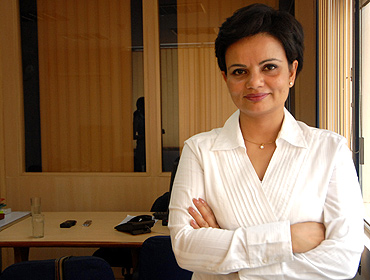During the past 2 decades, cell-based therapies for SCI have been researched in several studies. Replacement of damaged neural tissues and re-establishing connections between the central and peripheral nervous system is vital for the treatment strategy for patients with SCI. According to factsheet of WHO, over 5 lakh people are estimated to suffer from SCI per year. American Spinal Injury Association’s (ASIA) Impairment Scale is a universally accepted scale to assess the SCI, but this scale does not cover all parameters of SCI. Development of new scoring system by Nutech mediworld has the remaining parameters covered in its Nutech Functional score(NFS).

With NFS, it is easy to assess the improvements with every stage of treatment phase consist of a 63 point grading system with 5 grades for each parameter. Thus, the cells having a potential of self-renewal and differentiating into multiple cell types would be best suited for patients with SCI. Dr Geeta Shroff, Director Nutech Mediworld, in a recent research has published report on how human embryonic stem cells (hESC’s) can treat spinal cord injuries (SCI). The findings are first of its kind as the cell line developed was free from animal products and chromosomally stable. The uniqueness about the cell line that makes it exclusive is that the process of cell line was derived from a single hESC which is already patented and published in her earlier reports.
A Spinal Cord Injury (SCI) can be any damage to the spinal cord that changes its function, temporary or permanently. SCI is a challenging neurological injury and is associated with permanent disability and decreased life expectancy. The complex series of pathological events involved in SCI result in long-lasting locomotor and sensory neuron degeneration below the injury. Replacement of damaged neural tissue, enhancement of endogenous neural regeneration, and modulation of the inflammatory response after SCI are the key elements in restoring function after SCI.
Human embryonic stem cells (hESCs) play a vital role in treating neurological disorders and have a huge potential for differentiation. Research done by Dr Geeta Shroff on Stem cell transplantation proves to be a promising technology that has the potential to replace damaged neurons, reestablish lost axonal connections, and provide neuro-protective factors to allow for healing and recovery after SCI.
She started the research in 2002, with 33 patients suffering from incurable diseases. Thereafter the safety and efficacy of the therapy, dose schedule, and protocol for administration of hESCs and therapy schedule were established in a pilot study conducted on 72 patients. With the success of her pilot study, another study was done on 108 patients with SCI that verified the safety and efficacy of hESC in patient with SCI. She has filed a patent with the World Intellectual Property Organization, covering over 126 countries.
The study was performed under proper supervision of a team of physicians that included external consultants and validated by an external clinical research organization. The patients were scored as per the new NFS system to monitor the improvements throughout the treatment.
After confirmation of diagnosis, the patients were tested for hypersensitivity reactions with hESCs (0.05 mL hESC injected subcutaneously). The study consisted of three treatment phases with gap phases in between so that the hESCs could grow, repair, and regenerate the affected part. Each treatment phase lasted 4–6 weeks and was 4–8 months apart. The physicians continuously administered the hESCs. No immune-suppressants were given to the patients. In addition to hESC therapy, all the patients received physiotherapy and occupational therapy.
The findings and results of the research showed dramatic changes in each phase. Out of the total patients examined 3/4thwere men with a mean age of 28 years. At the end of T1, 45% of the patients improved by at least one NFS score. At the end of T2, 58% of the patients improved by at least one NFS score, and at the end of T3, 70% of the patients improved by at least one NFS grade.
